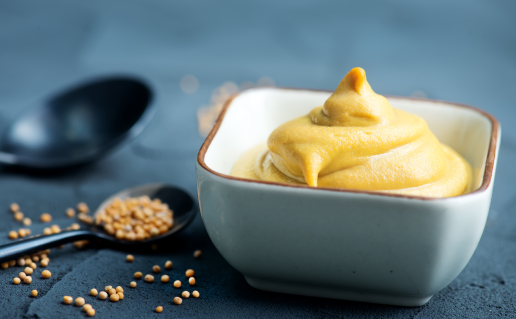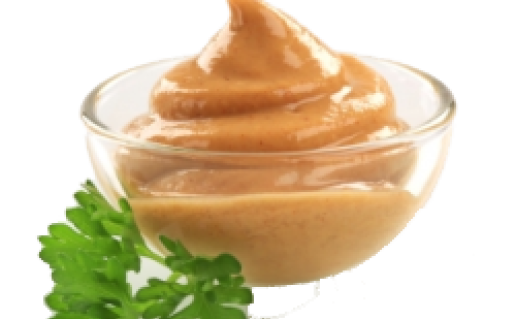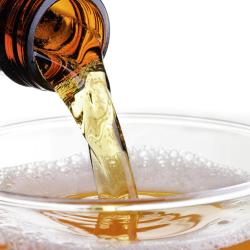COIT’s Guide to Removing Mustard Stains
Though it’s commonly paired with ketchup, mustard is certainly famous enough to stand on its own. It’s actually one of the world’s most popular condiments, with more than 700 million pounds of mustard consumed worldwide every year!
From hot dogs to hamburgers to soft pretzels, sauces, and marinades, mustard is enjoyed in a variety of ways, in countries around the world. Whether you like it as a condiment, as dressing, or as a glaze, mustard is certainly here to stay.
But what happens when this famous and delicious condiment ends up on your carpet? Yikes!
With Coit’s guide to mustard stain removal, your mustard stain won’t mess with your carpet for long. We’ll take you through a few do-it-yourself remedies that you can use at home to keep your carpet looking plush and clean.

The History of Mustard
Before we jump into mustard stain removal techniques, let’s take a look at a few facts about mustard, where it comes from and how it’s most commonly used.
Mustard was originally prepared by taking mustard seeds and grinding them up until they created a paste. The first mention of this condiment actually dates back to Roman times, where they would mix ground mustard seeds with unfermented grape juice. The grape juice was known as “must.” If you look into ancient Roman cookbooks discovered from around the 4th century, you’ll see that mustard was one of the ingredients listed in a glaze commonly used to coat a boar that was spit-roasted.
Fast forward to the 13th century and you’ll see that mustard became particularly popular in Dijon, France. We can thank the French for the lovely tasting and ever-so-popular Dijon mustard that appeared around this time (and we can thank Best Foods and Hellmann’s for “Dijonnaise”).
“Pardon Me….Do You Have Any Grey Poupon?”
Dijon, France took mustard making very seriously.
Grey Poupon, a special type of mustard that’s primarily sold in the US, was actually created in this city around 1770. Maurice Grey and Auguste Poupon came together to form a partnership and created this tasty condiment. Maurice was actually a mustard maker who had created a unique mustard recipe that contained white wine, while Poupon acted as his financial investor. The two put their heads together and came up with what the modern day world knows as “Grey Poupon.”
As a famous mustard maker, it’s safe to say that Maurice Grey probably encountered a mustard stain or two during his mustard making days, don’t you think?
Types of Mustard
Now when it comes time to remove mustard stains, you may be looking a few different stain types depending on which type of mustard you like. You can choose from:
• Dijon mustard
• Spicy brown/deli-style mustard
• Yellow mustard
• Beer mustard
• Sweet mustard (Bavarian)
• Hot mustard
• Fruit mustard
• Honey mustard
• Whole-grain mustard
No matter which type of mustard you go with, you’ll get a unique flavor (and a unique color, smell and look) to spice up a variety of dishes. Yum!
Mustard Stain Removal Tips
To learn more details to help you remove mustard stains, check out COIT’s do-it-yourself guide. We’ll give you more than one method of cleaning that will defend your carpet against stains on highly visible areas of your carpet.
How to Remove Mustard Stains from Carpet
COIT's Guide on How to Remove Mustard Stains from Carpet
How do you get mustard out of carpet?
This may be a question you’re asking yourself after a barbecue, or maybe you’re a big fan of mustard and eat it on everything! Whatever the case, it’s good to know what to do when this delicious condiment makes its way off your food and onto your carpet.
With a little help from Coit’s step-by-step guide to removing mustard stains from carpet, you’ll have the tools you need to recover from any mustard stain that comes your way.

How to Remove Mustard Stains from Carpet – Method # 1
- When you discover the mustard stain, the last thing you want to do is aggressively scrub the stain. Doing so will actually make the mustard soak into the carpet fibers even more. Instead, take a clean cloth and blot the stain gently to remove as much mustard as possible.
- Next, blot the stained area of the carpet with a solution made of 2 cups of warm water and 1 part dishwashing detergent.
- In a separate bowl, mix a bit of dishwashing detergent and hydrogen peroxide. The purpose of doing this is to create a paste (1 part hydrogen peroxide, 3 parts detergent).
- Using a spatula or spreading tool, spread the paste onto the affected area of the carpet.
- Using a steam iron, make sure it’s turned to its lowest setting. Lining up the iron directly over the stained area and hold it up - without actually touching the carpet. Hold it there for 30 seconds to loosen up the stain.
- Next, dip a clean towel into cold water. Continue blotting the carpet fibers to lift off any remaining mustard residue.
- Pat dry the area with a dry, clean cloth until the mustard stain is no longer visible.
Trouble removing your stain? Find discounts in your area - Limited time only!
Removing Mustard Stains from Carpet – Method # 2
If you have club soda in your fridge, it may also come in handy when you’re trying to remove mustard stains. So how do you get mustard out of carpet using this carbonated beverage?
Check out these do-it-yourself steps below.
- Carefully scrape away any remaining mustard before doing anything else.
- Pour club soda directly onto the mustard stain and blot it with a clean towel.
- If the mustard stain is still visible (it may have disappeared by this step), spray the stain with a mixture of 1 teaspoon of detergent and 2 cups of warm water. Let this solution soak into the carpet for 5 minutes.
- Rinse the carpet with cold water and blot dry.
Either of the above-mentioned do-it-yourself techniques can help you solve the problem of how to remove mustard stains from carpet. Simply follow the steps and keep this delicious condiment off your carpets for good.
For more advanced cleaning for stubborn carpet stains, consider calling COIT Carpet Cleaning to learn about our professional services and don't forget to checkout our coupons!
Remember to always do a spot removal test on a portion of carpet or upholstery that is normally not visible. These are suggested treatments only and COIT can't be held accountable for any damage sustained by use of the treatments in this spot removal guide.








